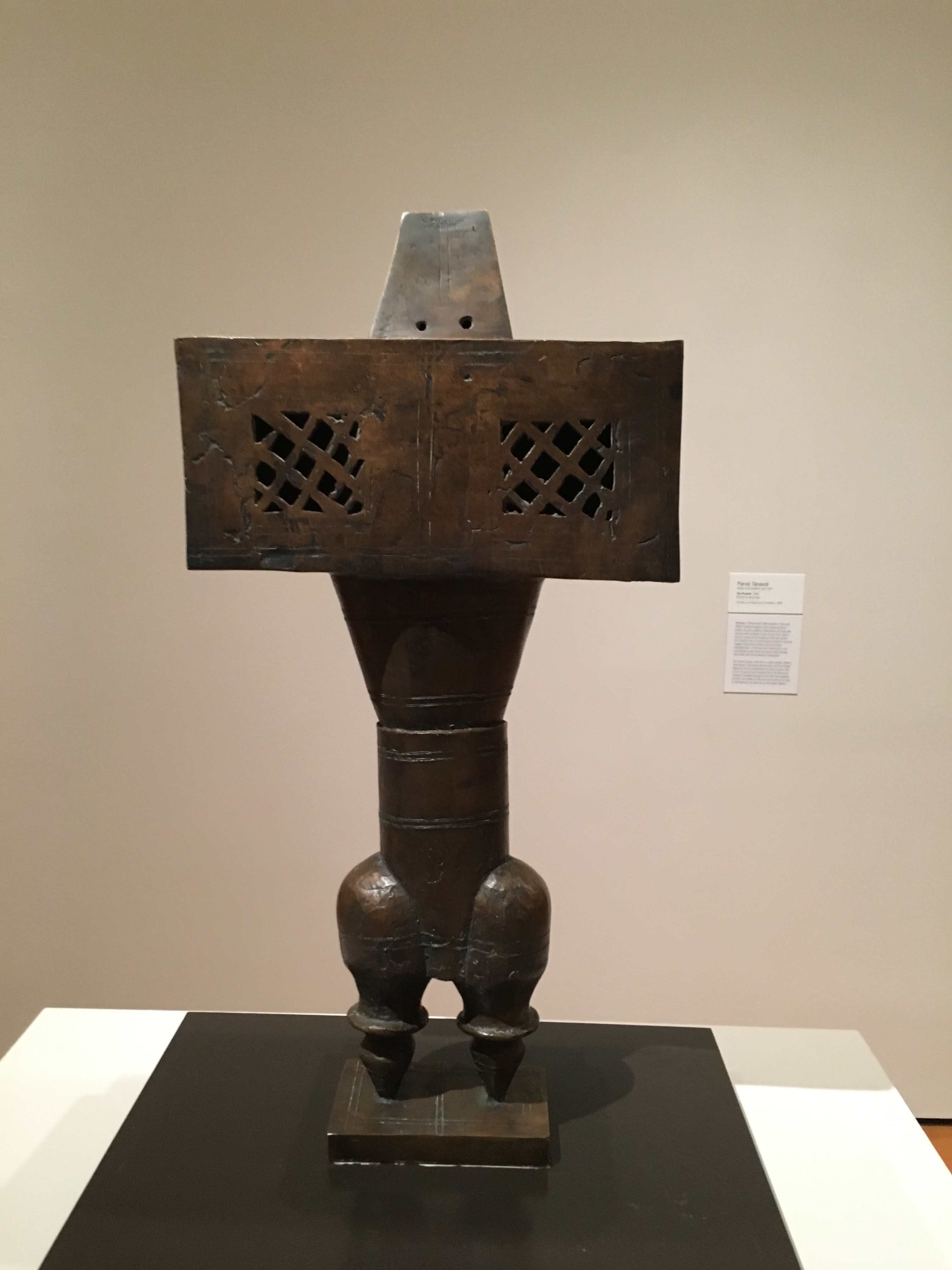The Draconian Documentation Regime For Third Party Arrangements in H-1B Visa Petitions
The attacks on the H-1B visa program by the Trump administration continue unabated. On February 22, 2018, U.S. Citizenship and Immigration Services (USCIS) published a policy memorandum entitled Contracts and Itineraries Requirements for H-1B Petitions Involving Third-Party Worksites (Third-Party Memo) clarifying that USCIS may request detailed documentation to ensure that a legitimate employer-employee relationship is maintained while an employee is working at a third-party worksite.
USCIS said this clarifies existing regulatory requirements relating to H-1B petitions filed for workers who will be employed at one or more third-party worksites. “This policy memorandum makes clear that employers must provide contracts and itineraries for employees who will work at a third-party location,” USCIS said. The guidance explains that for an H-1B petition involving a third-party worksite to be approved, the petitioner must show by a preponderance of evidence that, among other things:
- The beneficiary will be employed in a specialty occupation; and
- The employer will maintain an employer-employee relationship with the beneficiary for the duration of the requested validity period.
When H-1B beneficiaries are placed at third-party worksites, petitioners must demonstrate that they have specific and non-speculative qualifying assignments in a specialty occupation for that beneficiary for the entire time requested on the petition, the guidance states. While an H-1B petition may be approved for up to three years, USCIS will, in its discretion, generally limit the approval period to the length of time demonstrated that the beneficiary will be placed in non-speculative work and during which the petitioner will maintain the requisite employer-employee relationship.
In a related news release to the Third-Party Memo, USCIS said the updated policy guidance aligns with President Trump’s “Buy American and Hire American” Executive Order and directive to protect the interests of U.S. workers. “Employment-based petitioners who circumvent the worker protections outlined in the nation’s immigration laws not only injure U.S. workers (e.g., their wages and job opportunities), but also the foreign workers for whom they are petitioning,” the release stated.
Although the purpose of the Third-Party Memo is to exercise more scrutiny on contractual arrangements with third parties, the USCIS acknowledges that such arrangements may be a legitimate and frequently used business model under the H-1B visa program. The arrangement typically involves a third-party client who solicits service providers to deliver a product or fill a position at their worksite. In some cases, the petitioner may place the H-1B worker directly with the client. In other cases, there may be one or more intermediaries between the petitioner and the end client, commonly referred to as vendors. As the relationship between the petitioner and the beneficiary becomes more attenuated through intermediaries such as contractors, vendors or brokers, there is a greater need for the petitioner to specifically trace how it will maintain an employer-employee relationship with the beneficiary. For the very first time, the Third-Party Memo drills further into vendor concepts and acknowledges the role of “primary vendors” who have an established or preferred relationship with a client, or “implementing vendors,” who bid on IT projects with a client and then implement the contract using their own staff. Primary and implementing vendors will turn to secondary vendors to fill staffing needs on individual projects. USCIS acknowledges that the ultimate client project may be staffed by a team of H-1B beneficiaries who were petitioned by different, unrelated employers. USCIS will need corroborating evidence to substantiate a claim of actual work in a specialty occupation, such as contracts and work orders, including documentation to show the relationship between the petitioner, intervening vendors and the end client.
The need to document such third-party arrangements is not new. The USCIS has used Donald Neufeld’s January 2010 guidance (“Neufeld Memo”) to provide a framework for demonstrating that an employer-employee relationship exists. According to the Neufeld Memo, “The petitioner will have met the relationship test, if, in the totality of the circumstances, a petitioner is able to present evidence to establish its right to control the beneficiary’s employment. In assessing the requisite degree of control, the officer should be mindful of the nature of the petitioner’s business and the type of work of the beneficiary.” The Neufeld Memo emphasized the need for the petitioner to demonstrate its right to control the employment of the H-1B worker. As the relationship got more attenuated through intermediaries, USCIS has questioned the petitioner’s right of control over the beneficiary’s employment through requests for evidence. The new policy guidance recognizes the existence of intermediaries such as vendors as legitimate under the H-1B visa program. However, the Third-Party Memo suggests that in addition to contracts and work orders, the petitioner may be able to demonstrate that the beneficiary has an actual work assignment in a specialty occupation by providing a combination of the following or similar types of following evidence:
- Evidence of actual work assignments, which may include technical documentation, milestone tables, marketing analysis, cost-benefit analysis, brochures, and funding documents.
- Copies of relevant, signed contractual agreements between the petitioner and all other companies involved in the beneficiary’s placement, if the petitioner has not directly contracted with the third-party worksite.
- Copies of detailed statements of work or work orders signed by an authorized official or the ultimate end-client companywhere the work will actually be performed by the beneficiary. The statement should detail the specialized duties the beneficiary will perform, the qualifications that are required to perform the job duties, the duration of the job, and the hours to be worked.
- A letter signed by an authorized official of each ultimate end-client company where the beneficiary will actually work. The lettershould provide information, such as a detailed description of the specialized duties the beneficiary will perform, the qualifications required to perform those duties, the duration of the job, salary or wages paid, hours worked, benefits, a detailed description of who will supervise the beneficiary and the beneficiary’s duties, and any other related evidence.
(Emphasis added.)
The need to submit detailed statements from the end-client company documentation regarding the specialized duties that the H-1B beneficiary will perform, as well as the qualifications that are required to perform those duties, would be extremely onerous. Since the end-client is not the ultimate employer of the beneficiary, most clients would be reluctant to provide such letters. Indeed, providing such letters would be tantamount to acknowledging an employment relationship with the beneficiary, which the end client has avoided by arranging to contract with the petitioner or intervening vendors for a project or to fill positions.
Requiring the end client to provide a detailed discussion of the assignment and its requirements would directly contradict the Neufeld Memo, which insists that the employer has the right of control over the H-1B beneficiary’s employment. If the end client sets the requirements for the position, then the end client would be acting as the employer and controlling the H-1B worker’s employment. This would have other implications for the end client under a joint employer liability theory, and it would not be surprising for an end client to be reluctant in providing a detailed statement about the position and its requirements, especially when its relationship with the petitioner is attenuated through layers of vendors. However, in Defensor v. Meissner, 201 F.3d 384 (5th Cir 2000), the Fifth Circuit held that if the H-1B worker is placed at a third-party client site, it is important to demonstrate that both the petitioning employer and the client require a bachelor’s degree in a specialized field. The USCIS frequently cites Defensor v. Meissner in requests for evidence requiring further details about the position from the end client even while it requests evidence relating to the petitioning employer’s right of control over the H-1B worker’s employment at the client’s worksite. In some ways, Defensor v. Meissner contradicts the requirements under the Neufeld Memo, although immigration practitioners are not unfamiliar in playing the role of contortionist when making arguments on behalf of clients that are subject to the USCIS’s contradictory requirements! Perhaps the conflict between Defensor v. Meissner and the Neufeld Memo can be reconciled because the petitioner must demonstrate that it has the right of ultimate control over the H-1B worker’s employment in order to demonstrate the employer-employee relationship even though there could be more immediate control by the client at its worksite.
When the end client is reluctant to issue further details of the H-1B worker’s employment, the supplementary guidance to the Neufeld Memo issued in March 12 2012 (March 2012 Supplementary Guidance) could also come to the rescue. USCIS noted that the Third-Party Memo is intended to be read together with the Neufeld Memo and as a complement to that policy. The March 2012 Supplementary Guidance further clarifies that a petition involving a third-party worksite may be approved if the petitioner can demonstrate that it will retain the right to control the beneficiary. A number of different forms of documentation may be provided to demonstrate that a right to control exists, such as a letter from the end-client, but such a letter is not an actual requirement. Question 5 of the March 2012 Guidance states as follows:
Q5: Am I required to submit a letter or other documentation from the end-client that identifies the beneficiary to demonstrate that a valid employer-employee relationship will exist between the petitioner and beneficiary if the beneficiary will perform services at an end-client/third-party location?
A5: No. While documents from the end-client may help USCIS determine whether a valid employer-employee relationship will exist, this type of documentation is not required. You may submit a combination of any documents to establish, by a preponderance of the evidence, that the required relationship will exist. The types of evidence listed in the memorandum are not exhaustive. Adjudicators will review and weigh all the evidence submitted to determine whether you have met your burden in establishing that a qualifying employer-employee relationship will exist. (Emphasis added.)
Furthermore, Question 13 of the March 2012 Guidance states as follows:
Q13: The memorandum provides an example of when a computer consulting company had not established a valid employer-employee relationship. Are there any situations in which a consulting company or a staffing company would be able to establish a valid employer-employee relationship?
A13: Yes. A consulting company or staffing company may be able to establish that a valid employer-employee relationship will exist, including where the beneficiary will be working at a third-party worksite, if the petitioning consulting or staffing company can demonstrate by a preponderance of the evidence that it has the right to control the work of the beneficiary. Relevant factors include, but are not limited to, whether the petitioner will pay the beneficiary’s salary; whether the petitioner will determine the beneficiary’s location and relocation assignments (i.e. where the beneficiary is to report to work); and whether the petitioner will perform supervisory duties such as conducting performance reviews, training, and counseling for the beneficiary. The memorandum provides a non-exhaustive list of types of evidence that could demonstrate an employer-employee relationship. (Emphasis added.)
Questions & Answers: USCIS Issues Guidance Memorandum on Establishing the “Employee-Employer Relationship” in H-1B Petitions, rev. March 2012.
Despite the issuance of the Third-Party Memo insisting on further details about the H-1B worker’s job duties and requirements from the end client, petitioners may also want to point to the March 2012 Supplementary Guidance to the Neufeld Memo, which has not been reversed. Thus, when a document may not be available, a petitioner can point to the March 2012 Supplementary Guidance and provide a combination of any documents to establish, by a preponderance of the evidence, that the employer-employee relationship will exist. The Third-Party Memo puts additional obstacles. It rescinds a prior 1995 policy guidance and insists that a precise itinerary be submitted that requires services to be performed in more than one location. The prior guidance only required general statements, but the Third-Party Memo requires exact dates of employment and the locations of the services to be performed. The itinerary should detail when and where the beneficiary will be performing the services, and the Third-Party Memo sternly asserts that there can be no exception from the regulatory requirement at 8 CFR 214.2(h)(2)(i)(B).
On the other hand, the itinerary should only be required when the services will be performed at more than one location. If the H-1B worker will only be placed at only one client location, then there should be no insistence on an itinerary by the USCIS. If the work assignment should change later and cannot be anticipated at the time of filing the H-1B petition, resulting in a change of location, Matter of Simeio Solutions, LLC, 26 I&N Dec. 542 (AA0 2015), has already contemplated this and requires an employer to file an amended H-1B petition if the change of location requires a new Labor Condition Application. The USCIS should not be asking for an itinerary when the new job location cannot be anticipated, but the petitioner will file an amendment pursuant to Matter of Simeio Solutions. But under the Third-Party Memo, if the documentation does not clearly indicate that the work assignment will last for the duration of the proposed H-1B validity period, the petition may be approved for less than three years. At the time of filing an H-1B extension, if the petitioner cannot establish that the petitioner met the H-1B requirements when the worker was placed at the client site, including maintaining the right to control the beneficiary’s employment, the Third-Party Memo suggests that the extension may be denied even if it approved the new petition.
The H-1B visa has long been identified in the mind of its many critics with India, perhaps because of the vigorous use of this visa by Indian nationals, particularly in the IT industry. The Neufeld Memo, along with Matter of Simeio and now the Third-Party Memo, which was inspired by President Trump’s Buy American Hire American Executive Order, is a direct attack on the business model whose consistent efficiency has promoted reliability and quality in the IT industry, a condition whose existence is directly due to the ability of major technology companies in the United States and throughout the industrialized world to obtain top-drawer talent quickly with flexibility and at affordable prices that benefit end consumers, promote diversity of product development and more jobs for Americans. This is what the oft-criticized “job shop” readily provides, which has been recognized as a legitimate business model in the Third-Party Memo. By making possible a source of expertise that can be modified and redirected in response to changing demand, uncertain budgets, shifting corporate priorities and unpredictable fluctuations in the business cycle itself, the “job shop” is, in reality, the engine of technological ingenuity on which progress in the global information age largely depends. While most would not want to openly admit it, one wonders whether this business model would be so maligned and attacked if it was developed in a Scandinavian country rather than India. Indian H-1B workers have been unfairly disparaged even in the media for displacing American workers as we saw in the Disney episode (see my prior blog, Putting Disney and H-1B Visas in Perspective) without any regard to the benefits these H-1B workers ultimately bring to the American economy. The fact that the USCIS seeks to restrict this development, rather than to nurture it not only reflects the chronically insular character of U.S. immigration policy but the new siege mentality under the Trump administration that has deprived the nation and its economic system of the capacity for job creation and growth that would otherwise benefit us all. Nowhere is this fortress mentality more evident than in the draconian document regime that was first established under the Neufeld Memo and continues to build up under the Third-Party Memo, where the lines between rhetoric and reality have become blurred, if not totally erased. Yet, even here, the increasingly difficult to comply requirements through successive policy memoranda, including the latest Third-Party Memo, cannot shield American workers from the winds of change that will continue to blow. Far better would it be for the Trump administration and USCIS to welcome what must come by shedding the shibboleths of Buy American Hire American and thereby place such winds at our back.
(The author acknowledges the assistance of Eleyteria Diakopoulous who is a student in the JD program at Brooklyn Law School and is presently an Extern at Cyrus D. Mehta & Partners PLLC)









